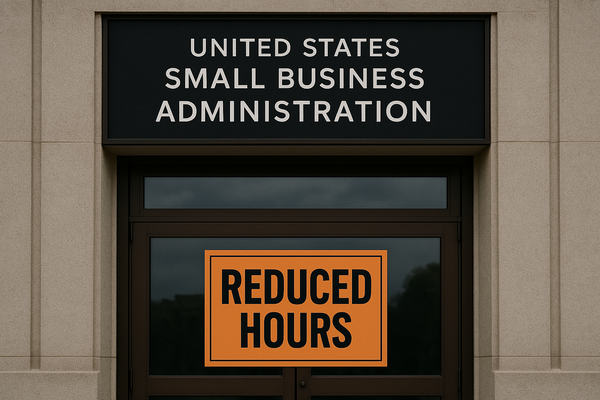Startup Restructuring 101 - Find Your Stop-Doing Work
There are a lot of tweets and blog posts advising founders to extend their runway given the current pullback in venture capital investing and the compression in valuations. But there is a right and wrong way to restructure your startup while keeping your team motivated and on track to deliver future growth.
The Goal of Restructuring: Uncovering Product-Market Fit
Most startups get themselves in trouble by burying product-market fit under a pile of ineffective initiatives in a desperate attempt to accelerate growth and sprint to their next fundraise. You poured your last round of funding into the launch of new products, new sales channels, new marketing channels, and an exploding tech roadmap. Your team is suddenly spending more time on hiring than on execution. Cracks appear in your measurement and reporting framework, and it's no longer clear which efforts are worthwhile. Cash burn accelerates, but every other metric is falling short of plan.
You can take some solace in the fact that this scenario is far too familiar with early-stage venture-backed startups. The good news is that you can peel back these unproductive efforts like an onion, slowly finding your way back to a solid foundation of product-market fit, with a longer cash runway to give you and your team more time to figure things out.
Mentally Prepare Yourself To Get Smaller and Slow Growth
There are few greater mental and emotional challenges for a founder than the shift from excitement and unbridled optimism to taking your team through a restructuring. One moment you're standing in front of your rapidly growing team, sharing the news of your latest round of funding, and showing chart after chart that proves your startup is ‘crushing it.'
And then suddenly, you're faced with announcing layoffs, shuttering beloved projects, and a plan for slower growth. This is one of the most challenging moments you will face. However, you need to find a way to push through the emotional weight of these decisions and prepare to lead your team through this challenging moment in time.
First, you need to lock in on the fact that hope is not a strategy. Build your high, medium, and low forecast, and then build your restructuring off your low plan. Stare at that rapidly approaching fiscal cliff. Treat it like gravity. Hope doesn't save you from hitting the ground when you trip and fall. Assume the same is true now. Hope isn't going to save your startup from running out of cash.
Second, shift your focus from all you might lose as you execute your restructuring plan to all you can save. Your years of hard work. The brand value you've built so far. The team that will remain. There is so much that is worth preserving and fighting for. Doing nothing puts it all at risk. Treat this moment as an opportunity to reset, refocus, and set your startup on a more sustainable and productive path forward.
Two Cost-Cutting Mistakes to Avoid
You must avoid two critical mistakes when deciding to restructure your startup.
First, avoid death by a thousand cuts. Make your first round of cuts deeper than you think you need. Following up layoffs and cost reductions with another round of cuts three months later is devastating to morale. The resulting attrition of your best people will make your turnaround more difficult.
Second, don’t try to cut costs across the entire P&L. I've seen this attempted in the past. The call goes out to reduce headcount and other discretionary expenses by 20%. Panic ensues. The cuts are made haphazardly. Those that can best advocate for their teams somehow avoid the deepest cuts. In the end, a smaller team is left to try to execute the same plan with fewer dollars and resources at their disposal.
Your team was probably already stretched too thin before you started this restructuring. If you simply ask everyone to do the same work with fewer resources, morale will plummet, and execution will suffer further. It's a recipe for disaster.
Do Fewer Things Better
That's the mantra for any restructuring. Consider it an opportunity to slow your organization down and give your team a far better chance to execute on fewer initiatives that have the highest potential impact.
That means finding your 'Stop Doing' work. Where do you look? Let's focus on the four main areas of expansion that your fundraising prowess allowed you to overfund.
- Products: You spent years thinking about the original product that launched your startup. Those follow-on products you launched to boost sales often suffer from Second Album Syndrome (aka The Sophomore Slump). Which products aren't pulling their weight? Poor sales. High cancellation and return rates. Low contribution margins. Weeding out underperforming products is the best place to start, as the effort to support these products ripples across the rest of your organization.
- Marketing: Take a fresh look at your LTV:CAC and unit economics. Don't use a three-year LTV if you only have 12 months of cash. Shut down unproductive marketing channels, and reduce spending to sustainable levels in the remaining channels. Simplify marketing execution across every team.
- Sales: This is an opportunity to rethink every sales channel, from e-commerce, physical retail, and wholesale to direct and indirect B2B sales teams. Every sales channel has its own P&L and cash flow profile; a critical analysis to determine if the channel is viable.
- Technology: Do you know what your technology team is working on? Are their priorities your priorities? Tech roadmaps often spiral out of control as everyone's pet projects jockey for position. Sit with your team and reprioritize every project to contribute to short-term growth and profitability. Winnow out vanity projects that don’t connect to short-term goals. You can always add them back later as needed.
You find cost savings by shutting down unproductive initiatives. This ensures that after you've executed your restructuring plan, you have alignment between your remaining team and resources and the work that needs to be done.
Watch Out For These Three Traps
Even once you've jumped over the mental hurdle of having to cut expenses, you're going to have the devil on your shoulder trying to talk you out of every single decision you want to make. That devil has three powerful tools at their disposal.
First, you have to contend with the Sunk Cost Fallacy. You think about all the time and money that's gone into a particular initiative, and that sunk cost becomes an excuse to keep the initiative alive. Even when the data doesn't show any signs of success, and the prospects for future success are murky at best. Don't fall for it. Money and time spent are water under the bridge. There is no getting it back. At any particular point, only the future investment of time and money, compared to expected outcomes, are relevant.
Then there is the 20 60 20 Rule. 20% of your startup's initiatives are obvious failures. You will quickly find broad consensus across your team to end these initiatives. 20% of your startup's initiatives are winners. Your team is excited about these initiatives, and the ROI is clear.
It's the 60% in the middle that will kill your startup. These are the projects and initiatives that are 'meh.' They seem to have the potential for breakout success quarter after quarter, yet they never reach escape velocity to the top 20%. But every day, they take more time from your management team and cash from your bank account while meandering along in the zone of mediocrity. These projects have powerful allies and often broad support across your organization. But you won't find sufficient cost reductions if you can't navigate the tough decisions lying in the 60%.
Finally, Analysis Paralysis is particularly dangerous as you develop your restructuring plan. Why? Because most startups lack the reporting and analysis tools that can quickly produce the information you need to determine which projects in the dreaded 60% zone are worth continuing to support. And for those projects with powerful advocates within your senior team, an effective stalling technique is asking for data that everyone knows does not exist.
This is where you, as the founder, must lead. You need to give your team permission and, at times, insist that they make the best decisions with the data they have. Don't allow others to create a wild goose chase for data and insights you haven't had before, all in the hope that they can save middling projects that have already incurred significant sunk costs.
Together, the sunk cost fallacy, the 20-60-20 rule, and analysis paralysis slow down the gears of your restructuring efforts. And that presents a considerable risk to you and your team. Why?
Speed Is Crucial
Once you have decided to restructure, your process's speed and deliberate nature are crucial. It doesn't matter how big or small your startup is. It doesn't matter how trustworthy your senior team might be. Your employees will catch on to your process much faster than you expect.
Sudden data requests from various teams will be a clue that changes are being considered. Discussions behind closed doors or large blocks of zoom meetings on calendars signal something is amiss. If your process gets bogged down in disagreements on which course of action to follow, those disagreements will slowly seep into the rest of your organization.
The rumor mill is more powerful than you can imagine. You need to find the power to lead your team quickly and efficiently through these decisions before the process gets away from you.
Restructuring is not a sign of failure.
Executing a restructuring of your startup is not a sign of failure. It's a sign of leadership.
Don’t let your startup drift into a crisis. Make the tough decisions. Do fewer things better. Reset a path forward that keeps you and your team motivated and committed to fulfilling your vision. Apply lessons learned from past mistakes. When executed well, a restructuring can leave your startup more resilient, focused, and better prepared to navigate the challenges ahead.




